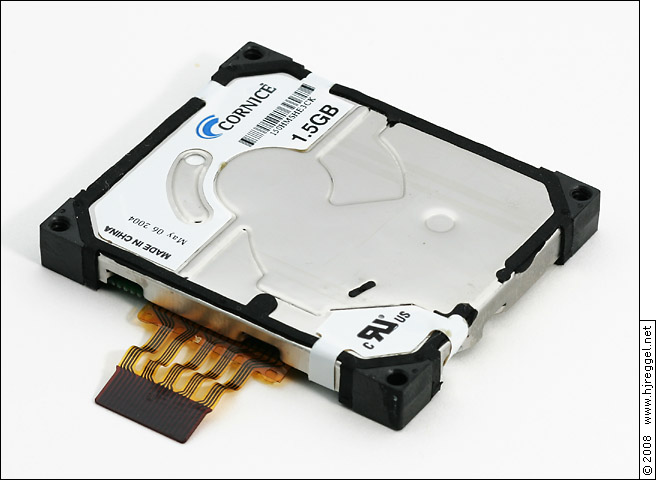
For other manufacturers, see the Microdrive History .
Cornice did not aim at the CF-II+ removable format, but instead specialized in non-removable drives for mobile devices with a custom 20-wire flex strip ZIF connector. According to the datasheets, they offered some of the later drives with CF-ATA interface, but most likely to make it easier for manufacturers to replace the drives in existing product lines with Cornice models.
According to a timeline given on the former website, the company was founded in August 2000. The first samples were available in April 2003. The release dates of the first Storage Element series were: 1.5GB in June 2003, 2.0GB in January 2004, 3.0GB in January 2005 and 4.0GB in July 2005. The next steps were already the Cornice Dragon series with 8GB and 10GB announced in January 2006, and Cornice Dragon-2 with 12GB announced in August 2006.
The Cornice Storage Element series had the same footprint as CompactFlash, 42.8 × 36.4 mm²:
The Cornice Dragon series had the reduced footprint of 40 × 30 mm²:
Quick links: Harddisk · Performance · Enclosure
This is the 1.5GB Cornice Storage Element (150HMSHE3CK) from an "early" 1.5GB USB Drive. If you take a closer look, you can see that the drive was manufactured in May 2004.
The disk has a capacity of 1,463,648,256 bytes (1.36GB), most likely mapped as CHS 2836/16/63, which could be translated into CHS 709/64/63.
 | |
| Cornice 1" Storage Element 1.5GB, top view |
Please note the ribbon with the custom 20-pin interface.
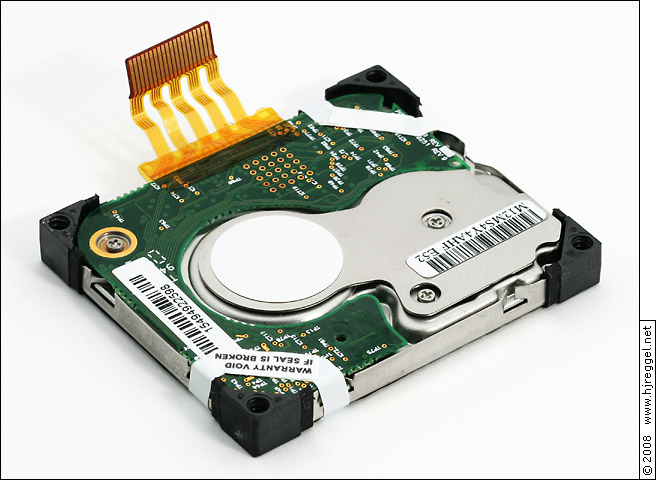 | |
| Cornice 1" Storage Element 1.5GB, bottom view |
The read/write rate diagram of the Storage Element is very clean, but shows an unusual zone pattern. It looks as if the drive would start at about 1/3 reading towards the inner tracks, and then continues to read from about 1/3 towards the outer tracks.
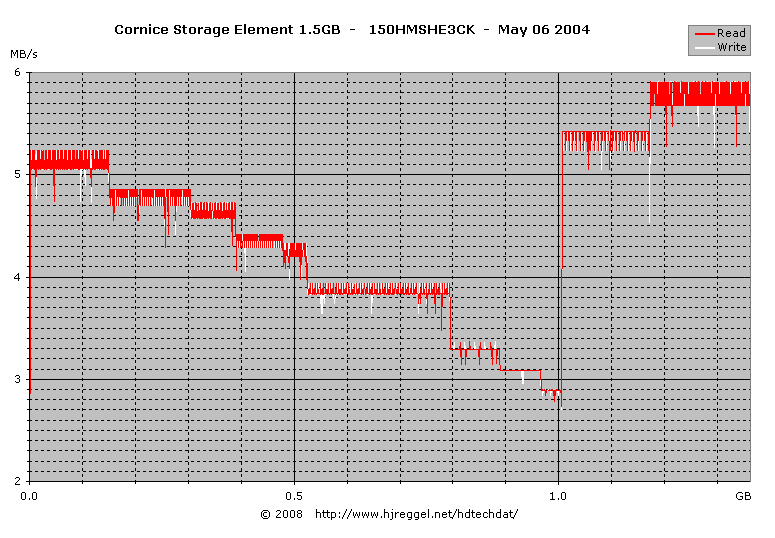
The USB Drive was labeled "Leadtek My DigiBank 1.5G" and had a quite large enclosure of 78.0×54.0×13.0mm³ and a weight of 70g. The PCB inside is labeled "iSave 1.5G REV:H" and was designed in November 2003. The plastic part at the left side was to hold the swing-out USB plug.
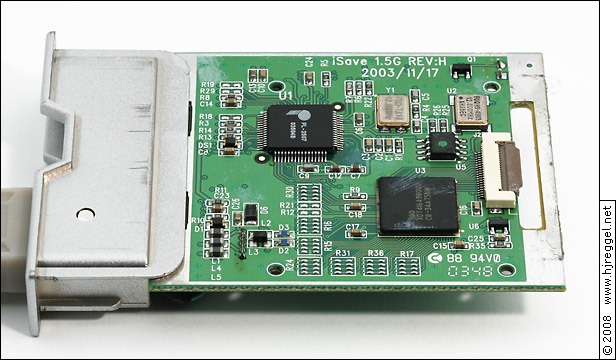 | |
| PCB for Cornice Storage Element to USB 2.0 |
If you take a closer look at the routing, it is very unlikely that the drive has a 16-bit interface. There is one controller translating from the Cornice interface to ATA, and a Prolific PL-2507 ATA to USB bridge. The Prolific controller shows the usual "media size bug", reporting one sector too much: 1463648768 bytes instead of 1463648256 bytes. The error becomes more obvious in hexadecimal notation where the reported size is 0x573D8200 were the 0x200 at the end is from the non-existing 512-byte sector. Once a disk is partitioned according to its actual size, this bug does not cause any harm.
Quick links: Harddisk · Performance · Enclosure
This is the 3.0GB Cornice Storage Element (300CMSHA754) from a 3.0GB USB Drive. The disk was manufactured in June 2005.
The disk has a capacity of 3,018,129,408 bytes (2.81GB), most likely mapped to CHS 5848/16/63, which could be translated into CHS 731/128/63.
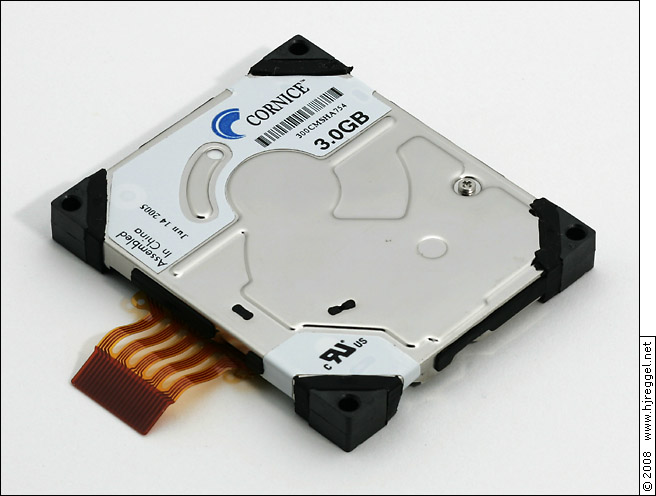 | |
| Cornice 1" Storage Element 3.0GB, top view |
The 3.0GB version shows a very similar construction as the 1.50GB version, except that the plate covering actuator and bearing areas is missing.
 | |
| Cornice 1" Storage Element 3.0GB, bottom view |
The read/write rate diagram of the 3.0GB Storage Element shows the same unusual zone pattern as the 1.5GB version, but with media zones from about 4MB/s to about 8MB/s.
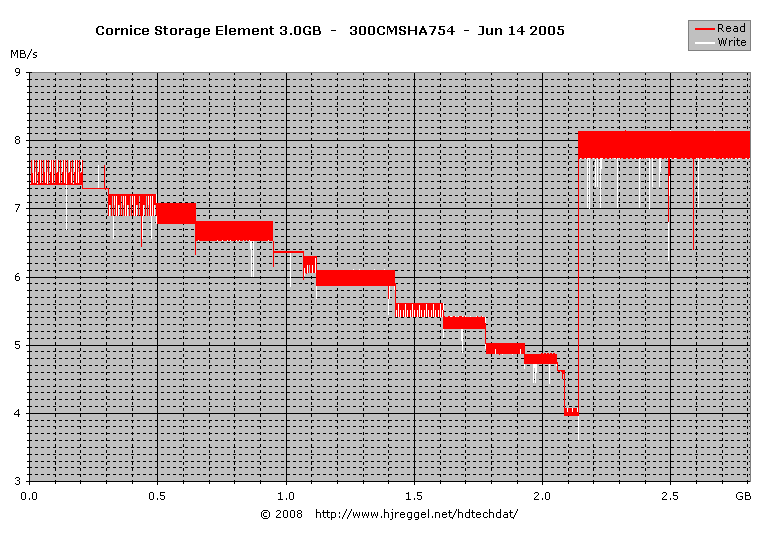
The disk is featured inside an "intuix 3GB super key" (IXHDD3S600). In terms of the year 2005 the shell is compact, 68.0×52.5×13.2mm³, has an appealing tape-cartridge-look, and an attached USB plug with about 75mm of cable.
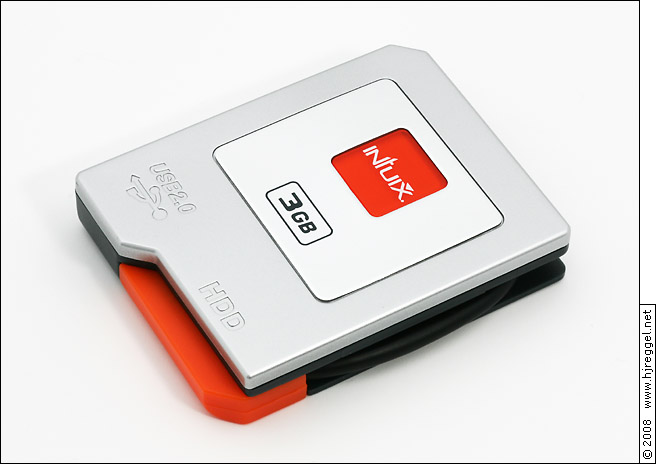 | |
| Intuix Super Key S600 3GB |
 | |
| Intuix Super Key S600 3GB |
The PCB has the usual 2-stage architecture with Cornice to ATA and ATA to USB bridge. The USB bridge is a Genesys Logic GL811E.
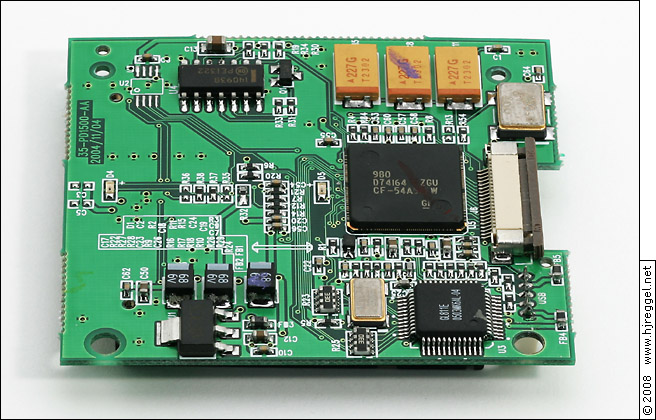 | |
| PCB with USB 2.0 bridge |